Dec. 31, 2018
Prelims Pointers
Dec. 31, 2018

About:
- Mrinal Sen was born in 1923 in Faridpur, now in Bangladesh. He was a prominent director of golden era of Parallel cinema of 50s and 60s decade.
- Career: He debuted in 1955 with “Raat Bhore” and found local acclaim with “Neel Akasher Neechey” and “Baishey Shravana”. However, ‘Bhuvan Shome’, finally launched him as a major filmmaker, both nationally and internationally.
- Awards and Honours:
- Sen also won the four national Awards for direction for ‘Bhuvan Shome’, ‘Ek Din Pratidin’, ‘Akaler Sandhane’ and ‘Khandhar’.
- In 1981, the Government of India awarded Sen with the Padma Bhushan.
- In 1985, he was awarded the Commandeur de Ordre des Arts et des Lettres (Commander of the Order of Arts and Letters), the highest civilian honour conferred by France for his contribution to arts.
- Between 1998 and 2003, he was made an Honorary Member of the Rajya Sabha.
- In 2005, the Dadasaheb Phalke Award was awarded to him for the year 2003.
- In 2017, he was inducted as a member of the Oscar Academy.
- Sen also won the four national Awards for direction for ‘Bhuvan Shome’, ‘Ek Din Pratidin’, ‘Akaler Sandhane’ and ‘Khandhar’.
Prelims Pointers
Dec. 31, 2018

About:
- The ‘Chennai Andaman Nicobar Island’ (CANI) cable system is a sub-marine cable system to provide high speed internet to the Andaman and Nicobar Islands.
- Speed: The CANI cable system will have a speed of 100 Gigabit per second.
- Route:
- The sub-marine cable system will be laid on the sea bed and the total route length will be 2,199.66 km.
- It will connect the Indian mainland from Chennai with the eight islands of the Union Territory namely: Port Blair, Little Andaman (Hut Ba), Car Nicobar, Kamorta, Great Nicobar (Campbell Bay), Havelock, Long and Rangat.
- The cable will land at the beaches and terminate at the proposed beach manhold (BMH) locations and then taken to the cable landing station (CLS) for distribution.
- The sub-marine cable system will be laid on the sea bed and the total route length will be 2,199.66 km.
- Cost: The project is expected to be implemented at a cost of ₹71 crore.
- Significance:
- It will be of immense strategic significance to India in addition to assisting the Andaman and Nicobar Islands communications security, especially during natural disasters or failures of other systems.
- At present, telecom connectivity between the mainland and Andaman and Nicobar is through satellites with limited bandwidth capacity.
- It will be of immense strategic significance to India in addition to assisting the Andaman and Nicobar Islands communications security, especially during natural disasters or failures of other systems.
Prelims Pointers
Dec. 31, 2018

Credit ratings:
- Credit ratings are assigned to debt instruments (not to equity instrument) by a Credit Rating agency (CRA).
- Rating is denoted by a simple alphanumeric symbol, for e.g. AA+, A-, etc.
- Rating indicates that whether the issuer company can repay its debt obligation in full and on time.
- Credit rating serves 2 main purpose:
- Borrowing cost: It Influences the borrowing cost of country in international market.
- Investment: Credit rating Influences foreign investors decision to invest I.E. by seeing this, the investor decides whether to buy, hold, or sell a debt instrument.
- Borrowing cost: It Influences the borrowing cost of country in international market.
Credit rating agencies (CRAs):
- A credit rating agency is an entity which assesses the ability and willingness of the issuer company for timely payment of interest and principal on a debt instrument.
Credit rating agencies are regulated by SEBI under the SEBI (Credit Rating Agencies) Regulations, 1999.
- Some of the Global CRAs are: Fitch, Moody, S&P.
- Some of the Indian CRAs are: Credit Analysis & Research Ltd. (CARE), Credit rating information services of India (CRISIL), Investment and credit rating agencies (ICRA) etc.
Prelims Pointers
Dec. 31, 2018

About:
- With this decision, starting from January 1, Foreign tourists can now directly fly to the Andaman and Nicobar Islands.
- This has been done In pursuance of sub-rule (b) of rule 3 of the Passport (Entry into India) Rules, 1950.
- The Superintendent of Police (CID) of the Island has been designated as the “civil authority” for the immigration check post at Port Blair airport.
- The decision came after it was found that Andaman and Nicobar Islands is the most sought-after tourist destination in the country receiving an average four lakh tourists, including several thousand foreigners, annually.
- According to data available with the Home Ministry, more than 16 lakh tourists visited the Andaman and Nicobar Islands between 2015 and October 2018.
Prelims Pointers
Dec. 31, 2018

About:
- The report has been prepared jointly by two NGOs namely Child Rights and You (CRY) and the Centre for Budget and Governance Accountability (CBGA).
- The report examines budgeting for school education in six States — West Bengal, Chhattisgarh, Tamil Nadu, Uttar Pradesh, Bihar and Maharashtra — during the 14th Finance Commission recommendation period, which started in April 2015.
Key Findings:
- State governments have increased their budgets for school education in the past three years following the 14th Finance Commission recommendations.
- But the allotment of funds has not been enough to attract permanent qualified teaching staff to government schools.
- As on March 2017, West Bengal, Chhattisgarh, Uttar Pradesh and Bihar have from 19% to 34% of total teacher positions at the elementary level vacant.
- Maharashtra and Tamil Nadu were relatively better with 5.9% and 2.6% posts unfilled.
- As on March 2017, West Bengal, Chhattisgarh, Uttar Pradesh and Bihar have from 19% to 34% of total teacher positions at the elementary level vacant.
- More than one lakh schools in India are run with only one teacher. The figures don’t entirely capture the severity of the shortfall as they do not reflect the shortage of subject teachers.
Prelims Pointers
Dec. 31, 2018

About:
- Agencies involved: The Ujjwala Sanitary Napkins is an initiative by three oil marketing companies (OMCs) – IOCL, BPCL and HPCL – as a part of their Corporate Social Responsibility (CSR) in Odisha.
- Objective: The mission is aimed to educate women in Odisha on female hygiene and health, improve accessibility to low cost eco-friendly sanitary pads and boost rural employment and economy.
- Initiative details:
- Under it, the three companies will set up 100 manufacturing units at the Common Service Centres (CSC) covering 93 Blocks across 30 districts of Odisha at an estimated cost of ₹2.94 crore.
- Each facility will have a capacity to produce 1,200-2,000 pads per day. It will also have a sterilisation room to ensure that the napkins are sterilised before they are packed for use by rural women.
- These napkins will be priced at ₹40 per pack, each containing eight pads.
- The Ujjwala pads will be made of virgin wood pulp sheet, non-woven white sheet and a gel sheet which are all biodegradable in nature and will leave minimal carbon footprint.
- Under it, the three companies will set up 100 manufacturing units at the Common Service Centres (CSC) covering 93 Blocks across 30 districts of Odisha at an estimated cost of ₹2.94 crore.
Prelims Pointers
Dec. 31, 2018

About:
- What is it?
- The phenomenon of Makaravilakku (light) which sums up the climax of the annual Sabarimala pilgrimage is traditionally held on either January 14 or 15 each year.
- The Makaravilakku (light) appears thrice at Ponnambalamedu -a remote hill-top eight kilometers east of the Sannidhanam- on Makar Sankranti after the evening puja.
- The phenomenon of Makaravilakku (light) which sums up the climax of the annual Sabarimala pilgrimage is traditionally held on either January 14 or 15 each year.
- Religious significance:
- Makaravilakku celebrates the meeting between Rama and Dharmashasta (another name for Ayyappan) in Sabarimala.
- Lakhs of devotees throng the shrine to witness the Makaravilakku. The devout believe that Makara Jyothi darshan would bring them good luck.
- Makaravilakku celebrates the meeting between Rama and Dharmashasta (another name for Ayyappan) in Sabarimala.
- Reason for Light:
- For many years devotees considered the Makaravilakku a divine phenomenon.
- It was only in 2011 that the traditional custodian of the Sabarimala shrine- clarified that the light seen in the skies was man-made.
- In earlier times, it was believed that forest-dwellers in and around Ponnambalamedu used to light the fire as part of their Makaravilakku celebrations. The tradition continued even after these tribals vacated their abode with the Travancore Devaswom Board (TDB) taking over the responsibility.
- For many years devotees considered the Makaravilakku a divine phenomenon.
Prelims Pointers
Dec. 31, 2018

About:
- The bridge connecting Chatham and Bamboo Flat in Andaman Nicobar islands will be about 2 kms long.
- Bambooflat with Chatham – the first British settlement in the region – belong to Port Blair group of islands.
- At present, people need to travel about 48 kms to reach from one point to other through land. The construction of a bridge will bring the two regions closer.
- The task for implementing it has been given to National Highways and Infrastructure Development Corporation Ltd (NHIDCL), a government company.
Prelims Pointers
Dec. 31, 2018

About:
- The Ross Island was renamed Netaji Subhas Chandra Bose Dweep, the Neil Island as Shaheed Dweep and the Havelock Island as Swaraj Dweep.
- This was announced on the occasion of the 75th anniversary of the hoisting of the Tricolour by Netaji Subhas Chandra Bose.
- The first Prime Minister of the Azad Hind government, Netaji Subhas Chandra Bose, had made India’s Independence resolution on the soil of Andaman. On this day in 1943, he had suggested that Andaman and Nicobar Islands be renamed Shahid and Swaraj Dweep.
Prelims Pointers
Dec. 31, 2018

About:
- PM Modi dedicated the 150 foot high Flag Mast at South Point in Port Blair commemorating the historic event of hoisting of first Tricolor on Indian soil by Netaji Subhash Chandra Bose in Port Blair on Dec 30, 1943.
- During the World War II, the Japanese had captured the Andaman and Nicobar Islands, and Netaji came here as the Azad Hind Fauz led by him was an ally of the Japanese force.
Dec. 30, 2018
Prelims Pointers
Dec. 30, 2018

About:
- He Jiankui is a Chinese biophysics researcher who is an associate professor in the Department of Biology of the Southern University of Science and Technology in Shenzhen, China.
- In November 2018, he had claimed that he had created the first human genetically edited babies, twin girls known by their pseudonyms, Lulu and Nana.
- This announcement was met with widespread condemnation. Scientists worldwide denounced the work, describing it as a step too far. Subsequently Chinese authorities suspended all his research activities.
Prelims Pointers
Dec. 30, 2018

About:
- The algorithm — Finder of Rare Entities (FiRE) — assigns a rareness score to each cell that is computed based on the gene expression profile of about twenty thousand genes.
- Cells having scores above a certain threshold are reported as rare cells. Circulating tumour cells, cancer stem cells, antigen-specific T cells are a few examples of rare cells.
- Significance:
- It can find rare cells from a very large pool of cells in a matter of seconds.
- Besides being fast, the new algorithm has superior sensitivity and specificity compared with existing methods.
- It can find rare cells from a very large pool of cells in a matter of seconds.
Prelims Pointers
Dec. 30, 2018

About:
- Common name: Himalayan vulture.
- Scientific name: Gyps himalayensis.
- It is an Old World vulture in the family Accipitridae. It is one of the two largest Old World vultures and true raptors.
- Distribution: This species is found along the Himalayas and the adjoining Tibetan Plateau.
- International Union for Conservation of Nature (IUCN) status: Near Threatened species.
- Threat:
- Himalayan vultures are also susceptible to toxicity induced by diclofenac, a drug whose residues in domestic animal carcasses.
- But their population have however not shown signs of rapid decline as witnessed in populations of other Gyps vultures across Asia.
- Himalayan vultures are also susceptible to toxicity induced by diclofenac, a drug whose residues in domestic animal carcasses.
Prelims Pointers
Dec. 30, 2018

About:
- Submission of national reports is a mandatory obligation on Parties to international treaties, including CBD. Parties are required to submit their NR6 by 31 December 2018.
- The NR6 provides an update of progress in achievement of 12 National Biodiversity Targets (NBT) developed under the Convention process in line with the 20 global Aichi biodiversity targets.
Key findings of the Report:
- India has exceeded/overachieved two NBTs (6 and 9), is on track to achieve eight NBTs and is striving to meet the targets on the remaining two NBTs by 2020.
- With well over 20 % of its total geographical area under biodiversity conservation, India has exceeded the terrestrial component of 17 % of Aichi target 11, and 20 % of corresponding NBT relating to areas under biodiversity management.
- Similarly, India has also made noteworthy achievement towards NBT relating to access and benefit sharing (ABS) by operationalising the Nagoya Protocol on ABS.
- Having published the first internationally recognized certificate of compliance (IRCC) under the Protocol in 2015, India has since published nearly 75% of the IRCCs published so far on ABS Clearing House.
Prelims Pointers
Dec. 30, 2018

About:
- SAMPANN is an acronym for “System for Accounting and Management of Pension”.
- The SAMPANN software is a Comprehensive pension management system which will help in the timely disbursement of pensions to lakhs of pensioners of the telecom department.
Prelims Pointers
Dec. 30, 2018

About:
- ODOP scheme of Uttar Pradesh government aims to is to promote traditional micro, small and medium enterprises (MSMEs) synonymous with their respective districts to create jobs.
- Its key strategy is preservation and development of local crafts, improvement in product quality and skill development.
- Uttar Pradesh is unique in being famous for product-specific traditional industrial hubs across 75 districts, including Varanasi (Banarasi silk sari), Lucknow (chikan), Kanpur (leather goods), Aligarh (locks), Moradabad (brassware), Meerut (sports goods), Saharanpur (wooden products) etc.
Prelims Pointers
Dec. 30, 2018

About:
- International Rice Research Institute (IRRI) was established in 1960 with headquarters in Los Banos, Laguna in the Philippines.
- It is an international agricultural research organization with the objective of ensuring environmental sustainability of rice farming.
- IRRI is one of 15 agricultural research centres in the world that form the CGIAR (Consortium of International Agricultural Research Centres), a global partnership of organizations engaged in research on food security.
- For its contribution to green revolution in 1960s, it was awarded the Ramon Magsaysay Award.
- Earlier, an MoU was signed between IRRI and Government of India for setting IRRI South Asia Regional Center (ISARC) at campus of National Seed Research and Training Center (NSRTC) in Varanasi.
Prelims Pointers
Dec. 30, 2018

About:
- Status: ALIMCO is a “Not For Profit” Central Public Sector Undertaking working under the administrative control of Ministry of Social Justice & Empowerment, Govt. of India.
- Mandate: It has been manufacturing various types of aids & appliances on mass scale to meet the requirements of the Persons with Disabilities (PwDs), across the country.
- Centres:
- At present ALIMCO has 5 Auxiliary Production Centres (AAPCs) situated at Bhubaneswar (Orissa), Jabalpur (MP), Bengaluru (Karnataka), Chanalon (Punjab) and a new production unit in Ujjain.
- The Auxiliary Production Centre of Faridabad will the sixth unit for manufacturing modern assistive device.
- At present ALIMCO has 5 Auxiliary Production Centres (AAPCs) situated at Bhubaneswar (Orissa), Jabalpur (MP), Bengaluru (Karnataka), Chanalon (Punjab) and a new production unit in Ujjain.
Prelims Pointers
Dec. 30, 2018

About:
- The purpose of the Bill is to amend and remove the existing provisions of the laws which can be misused to harass authors by vested interests.
- The bill puts on the government the onus of explaining why a book needs to be banned and removes the government’s right to ban books indefinitely.
- The Bill envisages amending the following sections which are a major deterrent to free expression –
- Section 295A of the Indian Penal Code (IPC) that provides for imprisonment of up to three years for “deliberate acts intended to outrage religious feelings”
- as well as Section 298 of IPC, which is similar to 295A as it criminalises speech critical of religious organisations or religious figures
- Section 295A of the Indian Penal Code (IPC) that provides for imprisonment of up to three years for “deliberate acts intended to outrage religious feelings”
- It also seeks to amend are the obscenity laws that are “not in consonance with a liberal state.” These include Sections 292 and 293 of the IPC and Section 67 of the Information Technology Act.
- It also seeks to amend the Customs Act that allows governments to suspend the shipping in of books over an indefinite period of time (as had happened with the ban on Salman Rushdie’s Satanic Verses) and Sections 95 and 96 of the Criminal Procedure Code.
Comment:
- Tharoor cites the example of Wendy Doniger’s The Hindus: An Alternative History, which was banned in India because of legal issues under 295A.
- There are already other hate laws, like Section 153, that crack down on deliberate acts hurting religious sentiments, so India do not need other laws to specifically hurt authors.
- As a private member’s Bill, the legislation has hardly any hope of passing, but it reflects the contested terrain of freedom of speech and expression despite constitutional safeguards.
Prelims Pointers
Dec. 30, 2018

About:
- The Thanjavur doll is a type of traditional Indian toy made in the city of Thanjavur, formerly Tanjore, of Tamil Nadu.
- Background: In Tamil language, it is called as Thanjavur thalayatti bommai originated during 19th Century under King Saraboji’s reign.
- Movement: The centre of gravity and total weight of the doll is concentrated at its bottom-most point, generating a dance-like continuous movement with slow oscillations.
- Material: Traditionally these toys are handmade with paper mache, wax / Lae , plaster of paris/cement, coloring agents,Clay, Cardboard. Nowadays, they are also being made in plastics.
- Recognition: They have been recognized as a Geographical Indication by the Government of India as of 2008-09.
Dec. 29, 2018
Prelims Pointers
Dec. 29, 2018

Salient Features:
- Allowing FSI as per current norms in CRZ areas: As per CRZ, 2011 Notification, for CRZ-II (Urban) areas, Floor Space Index (FSI) or the Floor Area Ratio (FAR) had been frozen as per 1991 Development Control Regulation (DCR) levels. CRZ, 2018 Notification, de-freezes the same.
- Densely populated rural areas to be afforded greater opportunity for development: For CRZ-III (Rural) areas, two separate categories have now been stipulated as below:
- CRZ-III A - These are densely populated rural areas with a population density of 2161 per square kilometre as per 2011 Census. Such areas shall have a No Development Zone (NDZ) of 50 meters from the High Tide Line (HTL).
- CRZ-III B - Rural areas with population density of below 2161 per square kilometre as per 2011 Census. Such areas shall continue to have an NDZ of 200 meters from the HTL.
- CRZ-III A - These are densely populated rural areas with a population density of 2161 per square kilometre as per 2011 Census. Such areas shall have a No Development Zone (NDZ) of 50 meters from the High Tide Line (HTL).
- Tourism infrastructure for basic amenities to be promoted: Temporary tourism facilities such as shacks, toilet blocks, change rooms etc. have now been permitted in Beaches. However, a minimum distance of 10 m from HTL should be maintained.
- Procedure for CRZ Clearances streamlined: Only such projects/activities, which are located in the CRZ-I (Ecologically Sensitive Areas) and CRZ IV (area covered between Low Tide Line and 12 Nautical Miles seaward) shall be dealt with for CRZ clearance by the Ministry of Environment.
- A No Development Zone (NDZ) of 20 meters has been stipulated for all Islands
- All Ecologically Sensitive Areas have been accorded special importance: Specific guidelines related to their conservation and management plans have been drawn up.
- Pollution abatement has been accorded special focus: Treatment facilities have been made permissible activities in CRZ-I B area subject to necessary safeguards.
- Defence and strategic projects have been accorded necessary dispensation.
Comment:
- Background: The draft notification incorporates the recommendations made by the Shailesh Nayank Committee, which submitted its report in 2015.
- Benefits: The proposed CRZ Notification, 2018 will lead to enhanced activities in the coastal regions thereby promoting economic growth while also respecting the conservation principles of coastal regions.
Prelims Pointers
Dec. 29, 2018

About:
- India is a Party to the UNFCCC, which enjoins upon all Parties to furnish information, in the form of a National Communication regarding implementation of the Convention.
- At COP17, it was decided that Biennial Update Reports (BURs) shall be submitted every two years.
- The scope of second BUR is to provide an update to India's first BUR to UNFCCC.
- The BUR contains five major components: (1) National Circumstances; (2) National Greenhouse Gas Inventory; (3) Mitigation Actions; (4) Finance, Technology and Capacity Building Needs and (5) Support Received and Domestic Monitoring, Reporting and Verification (MRV) arrangements.
- Submission of India's Second BUR will fulfil the obligation of India to furnish information regarding implementation of the Convention, being a Party.
In 2014, 2.6 billion tonnes of CC-2 equivalent of GHGs were emitted from all activities (excluding LULUCF) in India.Salient Features of India's Second BUR to UNFCCC:
The net national GHG emissions after including LULUCF were 2.3 billion tonnes of CO2 equivalent.
- Out of the total emissions, energy sector accounted for 73%, IPPU 8%, agriculture 16% and waste sector 3%.
- About 12% of emissions were offset by the carbon sink action of forestland, cropland and settlements.
|
Land use, land-use change, and forestry (LULUCF), also referred to as Forestry and other land use (FOLU), is defined as a "greenhouse gas inventory sector that covers emissions and removals of greenhouse gases resulting from direct human-induced land use such as settlements and commercial uses, land-use change, and forestry activities. |
Prelims Pointers
Dec. 29, 2018

About:
- Merchandise Exports from India Scheme (MEIS)is one of the two schemes introduced under Foreign Trade Policy of India (FTP 2015-20), as a part of Exports from India Scheme. The other scheme is Service Exports from India Scheme (SEIS).
- MEIS replaced the following five other similar incentive schemes present in the earlier Foreign Trade Policy 2009-14:
- Focus Product Scheme (FPS)
- Focus Market Scheme (FMS)
- Market Linked Focus Product Scheme (MLFPS)
- Infrastructure incentive scheme
- Vishesh Krishi Gramin Upaj Yojna (VKGUY)
- Focus Product Scheme (FPS)
- Objective of the MEIS: To offset infrastructural inefficiencies and the associated costs of exporting products produced in India.
- Salient Features:
- The scheme provides incentive in the form of duty credit scrip to the exporter to compensate for his loss on payment of duties.
- To determine the quantity of incentive, the countries have been segregated into three groups.
- Group A has India’s traditional destinations such as the EU countries and USA.
- Group B covers almost all of India’s major export destinations globally. Group B has the highest quantum of incentive.
- Group C on the other hand has no incentive at all. It can be divided into, SAARC, Australia and New Zealand, some EU and African countries.
- Group A has India’s traditional destinations such as the EU countries and USA.
- The scheme provides incentive in the form of duty credit scrip to the exporter to compensate for his loss on payment of duties.
Prelims Pointers
Dec. 29, 2018

Recent development:
- The MSP for Fair Average Quality (FAQ) of "Milling Copra" has been increased to Rs.9521/- per quintal for 2019 season from Rs. 7511/-per quintal in 2018 and the MSP of "Ball Copra" has been increased to Rs.9920/- per quintal for 2019 season from Rs. 7750/- per quintal in 2018.
- The MSP of Copra is expected to ensure appropriate minimum prices to the farmers and step up investment in Coconut cultivation and thereby production and productivity in the country.
- The approval is based on recommendations of Commission for Agricultural Costs and Prices (CACP), an expert body.
- The National Agricultural Cooperative Marketing Federation of India Limited (NAFED) and National Cooperative Consumer Federation of India Limited (NCCF) would act as Central Nodal Agencies to undertake price support operations at the MSP in the Coconut growing states.
Copra is the dried meat or kernel of the coconut, which is the fruit of the coconut palm (Cocos nucifera). Coconut oil is extracted from copra, making it an important agricultural commodity for many coconut-producing countries.
Prelims Pointers
Dec. 29, 2018

Background:
- The POCSO Act, 2012 was enacted to Protect the Children from Offences of Sexual Assault, Sexual harassment and pornography for safeguarding the well-being of children.
- The Act defines a child as any person below 18 years of age.
- The act is gender neutral.
Amendment: Salient Features
The amendments are proposed to –
- provide stringent punishment, including death penalty, for committing aggravated penetrative sexual assault crime on a child.
- protect children from sexual offences in times of natural calamities and disasters.
- protect children in cases where children are administered any chemical substance, to attains early sexual maturity for the purpose of penetrative sexual assault.
- to address the menace of the child pornography. Penal provisions have been made more stringent for storing/possessing any pornographic material in any form involving a child for commercial purpose.
Prelims Pointers
Dec. 29, 2018

About:
- The 12th Global Healthcare Summit is being organized by the American Association of Physicians of Indian Origin (AAPI) in Mumbai.
- AAPI is a professional association for Indian American physicians. The association is based in Chicago and was founded in 1984.
Prelims Pointers
Dec. 29, 2018

Salient features:
- It proposes to set up a National Commission for Indian Medicine (NCIM) to replace the existing regulator Central Council for Indian Medicine (CCIM).
- Under NCIM, four autonomous boards will be setup.
- Board of Ayurveda: It will be responsible for conducting overall education of Ayurveda.
- Board of Unaini, Siddha and Sowarigpa: It will be responsible for conducting examinations and overall education of Unani, Siddha & Sowarigpa
- Board of assessment and rating: It will assess and grant permission to educational institutions of Indian systems of Medicine.
- Board of ethics and registration of practitioners: It will maintain National Register and ethical issues relating to practice of Indian systems of medicine.
- Board of Ayurveda: It will be responsible for conducting overall education of Ayurveda.
- Examinations:
- It also proposes a common entrance exam and an exit exam, which all graduates will have to clear to get practicing licenses.
- Further, a teacher's eligibility test has been proposed in the Bill to assess the standard of teachers before appointment and promotions.
- It also proposes a common entrance exam and an exit exam, which all graduates will have to clear to get practicing licenses.
Benefits:
- It aims to reform the medical education of Indian medicine sector in lines with the National Medical Commission proposed for setting up for Allopathy system of medicine.
- The proposed regulatory structure will enable transparency and accountability for protecting the interest of the general public.
- The NCIM will promote availability of affordable healthcare services in all parts of the country.
Prelims Pointers
Dec. 29, 2018

Salient features:
- It proposes to setup a National Commission for Homoeopathy (NCH) which will replace the existing regulator Central Council for Homoeopathy (CCH) so as to ensure transparency.
- Under NCH, three autonomous boards will be setup:
- Homoeopathy Education Board will be entrusted with conducting overall education of Homoeopathy.
- The Board of assessment and rating will assess and grant permission to educational institutions of Homoeopathy.
- Board of ethics and registration of practitioners of Homoeopathy will maintain National Register and ethical issues relating to practice are under the NCH.
- Homoeopathy Education Board will be entrusted with conducting overall education of Homoeopathy.
- Examinations:
- It proposes a common entrance exam and an exit exam which all graduates will have to clear to get practicing licenses.
- Further, a teacher's eligibility test has been proposed to assess the standard of teachers before appointment and promotions.
- It proposes a common entrance exam and an exit exam which all graduates will have to clear to get practicing licenses.
Comment:
- It aims at bringing reforms in the medical education of Homoeopathy in lines with the National Medical Commission proposed for setting up for Allopathy system of medicine.
- The existing regulator Central Council for Homoeopathy (CCH) had been earlier superseded by Board of Governors through an Ordinance and subsequent amendment of Act.
Prelims Pointers
Dec. 29, 2018

About:
- Suheldev was a legendary medieval-era warrior-king
- He is mentioned in Mirat-i-Masudi. According to the legend, Suhaldev was the eldest son of King Mordhwaj of Shravasti, during the 11th
- Though his historical existence is shrouded in mystery, he is today popular as a caste icon among the Rajbhars (OBC) and the Pasis (second largest Dalit caste in U.P.), both of whom have been competing for his legacy.
- According to critiques, BJP over the years aggressively tried to portray Suheldev as a Hindutva warrior who stopped the march of Muslim invader Ghazi Mian, a nephew of Mahmud Ghaznavi, in Bahraich and halted the spread of Islam in the region.
|
Mirat-i-Masudi is a historical romance, and a biography of Salar Masud. It was written by Abd-ur-Rahman Chishti during the reign of the Mughal emperor Jahangir in 17th century. |
Prelims Pointers
Dec. 29, 2018

About:
- Sri Satguru Ram Singhji was a Sikh philosopher, reformer and freedom fighter.
- He was born in 1816 in village Raiyan in district of Ludhiana in Punjab.
- He spearheaded the Namdhari sect to free the country.
- He started Kuka Movement to free the country a month before the Mutiny of 1857. He advocated boycott of the British merchandise and services.
- Social Reformer:
- He preached against killing the girl child in infancy and stood firmly against the Sati Pratha and urged people to remarry the widow to maintain her status in the society.
- He preached against killing the girl child in infancy and stood firmly against the Sati Pratha and urged people to remarry the widow to maintain her status in the society.
He started a new mass marriage system wherein the marriages were performed by spending a rupee and twenty-five paisa only. The dowry was totally banned.
Dec. 28, 2018
Prelims Pointers
Dec. 28, 2018
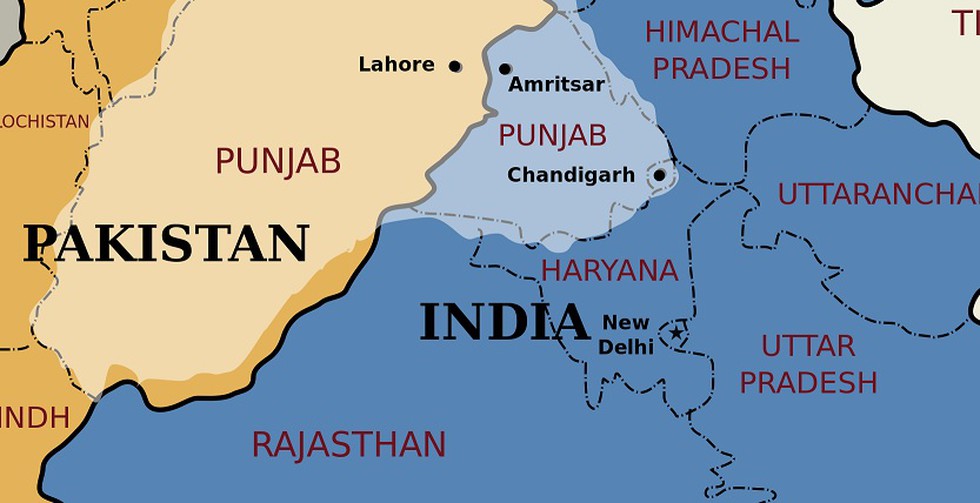
Khalistan:
- The Khalistan movement is a Sikh separatist movement, which seeks to create a separate country called Khalistan ("The Land of the Pure") in the Punjab region of South Asia to serve as a homeland for Sikhs.
- The territorial definition of the proposed country Khalistan consists of both the Punjab, India along with Punjab, Pakistan and includes parts of Haryana, Himachal Pradesh, Jammu and Kashmir, and Rajasthan.
Khalistan Liberation Force (KLF):
- The organization has been banned for the outfit's alleged involvement in killing of innocent people and police officers and several bombings on civilian targets in India.
- Now, KLF and all its manifestations have been declared outlawed under the Unlawful Activities (Prevention) Act 1967.
Prelims Pointers
Dec. 28, 2018
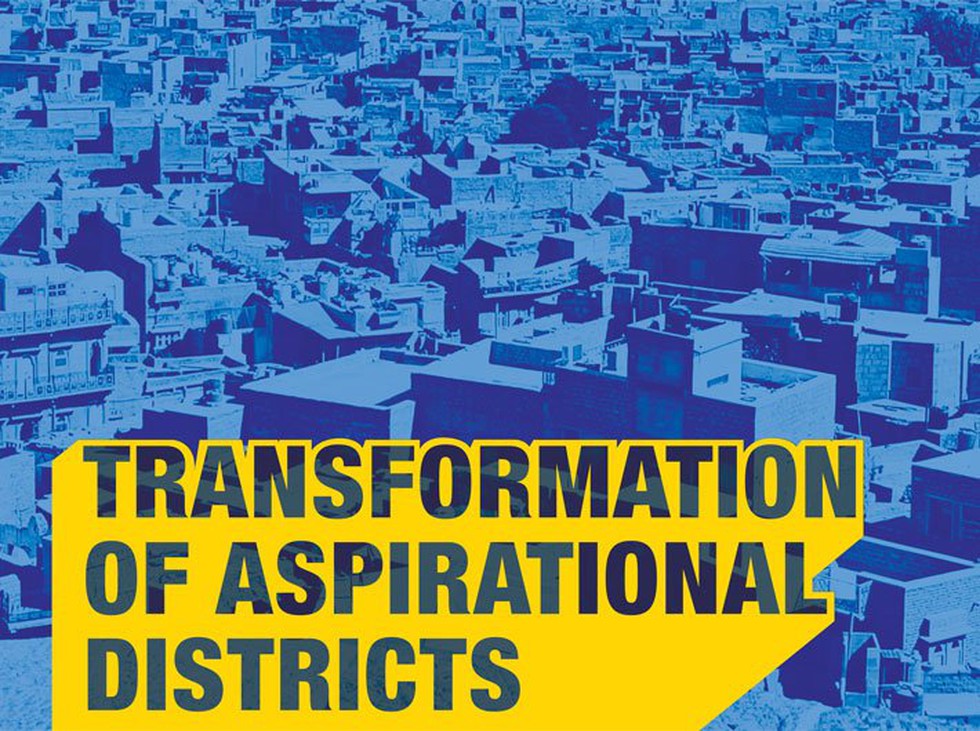
About:
- The second Delta Ranking of Aspirational districts details the incremental progress achieved by the districts during June to October this year across six key development sectors.
- The six indicators are: (1) Health & Nutrition; (2) Education; (3) agriculture & Water resources; (4) Financial Inclusion; (5) Skill Development; and (6) Basic Infrastructure.
- The rankings are based on the data that is publicly available through the Champions of Change Dashboard, which includes data entered on a real-time basis at the district level.
Key Findings:
- Most Improved Districts: (1) Virudhunagar district, Tamil Nadu has shown the most improvement overall, followed by (2) Nuapada, Odisha, (3) Siddarthnagar, Uttar Pradesh, (4) Aurangabad, Bihar and (5) Koraput, Odisha.
- Least improved Districts: (111) Pakur District, Jharkhand, (110) Hailakandi, Assam, (109) Chatra, Jharkhand, (108) Giridih, Jharkhand and (107) Kiphire district, Nagaland.
The Aspirational Districts Programme was initiated in January 2018 with the aim of improving the socio-economic status of 112 districts through cooperative and competitive federalism. Wayanad (Kerala) is not part of the ranking as household survey data was unavailable.
Prelims Pointers
Dec. 28, 2018
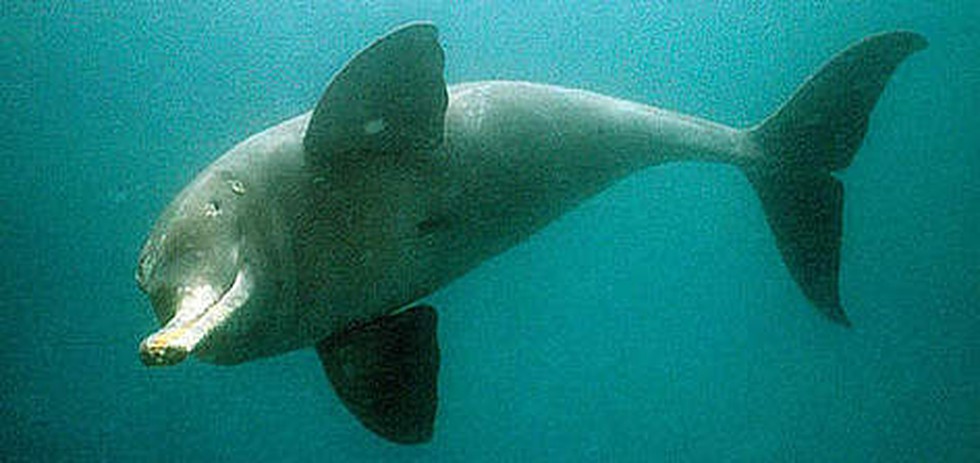
About:
- Common Name: Ganges river dolphin, Blind dolphin, Side-swimming dolphin, Susu, South Asian River Dolphin.
- Scientific Name: Platanista Gangetica.
- Habitat: Inhabits the Ganges-Brahmaputra-Meghna and Karnaphuli-Sangu river systems of Nepal, India, and Bangladesh.
- Gangetic dolphins are one of the four freshwater dolphins in the world. The other three are
- Baiji – of the Yangtze river in China,
- Bhulan – of the Indus in Pakistan and
- Boto – of the Amazon River in Latin America.
- Baiji – of the Yangtze river in China,
- Physical description:
- Although its eye lacks a lens (this species is also referred to as the "blind dolphin"), the dolphin still uses its eye to locate itself;
- The dolphin has the peculiarity of swimming on one side so that its flipper trails the muddy bottom. This behaviour is understood to help it to find food. That’s why it is also called as “Side-swimming dolphin”;
- Being a mammal, the Ganges River dolphin cannot breathe in the water and must surface every 30-120 seconds. Because of the sound it produces when breathing, the animal is popularly referred to as the 'Susu';
- Although its eye lacks a lens (this species is also referred to as the "blind dolphin"), the dolphin still uses its eye to locate itself;
- IUCN status: Endangered.
- Population: 1,200-1,800 individuals.
- Steps by government of India:
- Ministry of Environment and Forest declared Gangetic dolphin as National Aquatic Animal of India.
- Also, a stretch of Ganges river between Sultanganj and Kahlgaon in Bihar has been declared as dolphin sanctuary and named Vikramshila Gangetic Dolphin Sanctuary (VGDS).
- Ministry of Environment and Forest declared Gangetic dolphin as National Aquatic Animal of India.
Key Findings of Recent study:
- The Ganges River Dolphins is no longer sighted in the central and eastern parts of the Sunderbans due to rise in salinity in the water system.
- Only in the western part of Sunderbans, where the salinity is lower, could researchers find some evidence of the species.
- Because of its unique body shape, it becomes difficult for the dolphin to remain submerged in waters with high salinity.
- Freshwater flow to the Sunderbans is crucial for the subsistence of these species. However, the hyper-saline zone in the central part of the Sunderbans have lost connectivity with the upstream freshwater flow.
Prelims Pointers
Dec. 28, 2018
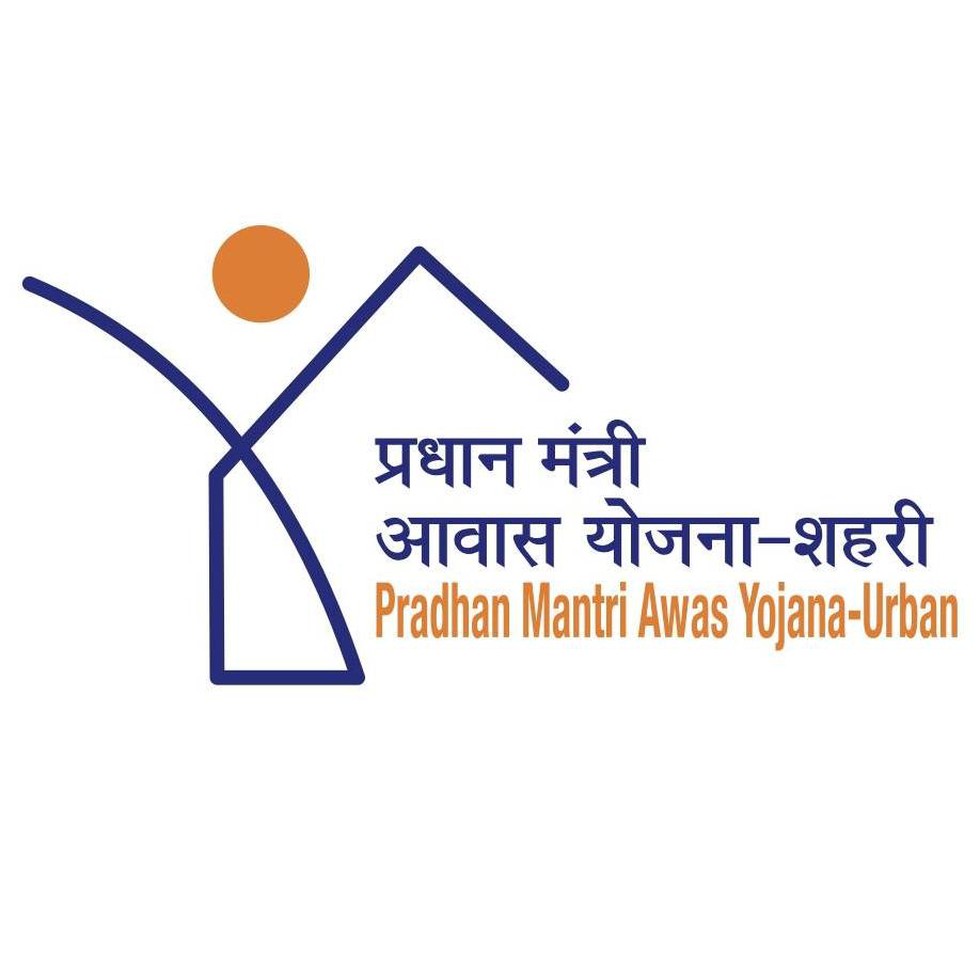
About:
- Implementation period: The Mission will be implemented during 2015-2022.
- Mission: To achieve the goal of Housing for All in Urban areas by 2022, when the Nation completes 75 years of its Independence.
- Features: Under it, central assistance will be provided to Urban Local Bodies (ULBs) and other implementing agencies through States/UTs for:
- In-situ Rehabilitation of existing slum dwellers using land as a resource through private participation
- Credit Linked Subsidy
- Affordable Housing in Partnership
- Subsidy for Beneficiary-led individual house construction/enhancement.
- In-situ Rehabilitation of existing slum dwellers using land as a resource through private participation
- Funding: Credit linked subsidy component will be implemented as a Central Sector Scheme while other three components will be implemented as Centrally Sponsored Scheme (CSS).
- Eligibility: All statutory towns as per Census 2011 and towns notified subsequently would be eligible for coverage under the Mission.
Prelims Pointers
Dec. 28, 2018

About:
- Background: In March 2018, Union Cabinet approved the North-East Industrial Development Scheme (NEIDS) 2017.
- Objective: To promote industrialization in the States of the North Eastern Region (NER) including Sikkim and boost employment and income generation.
- Implementation Period: The scheme has been approved with financial outlay of Rs.3000 crores upto March, 2020.
- Incentives: Following incentives shall be provided to new MSME industrial units set up in the North Eastern States including Sikkim:
- Central Capital Investment Incentive for Access to Credit (CCIIAC)
- Central Interest Incentive (Cll)
- Central Comprehensive Insurance Incentive (CCII)
- Goods and Service Tax (GST) Reimbursement
- Income-Tax (IT) Reimbursement
- Transport Incentive (TI)
- Central Capital Investment Incentive for Access to Credit (CCIIAC)
- The overall cap for benefits under all components of incentives will be of Rs. 200 crores per unit.
Prelims Pointers
Dec. 28, 2018
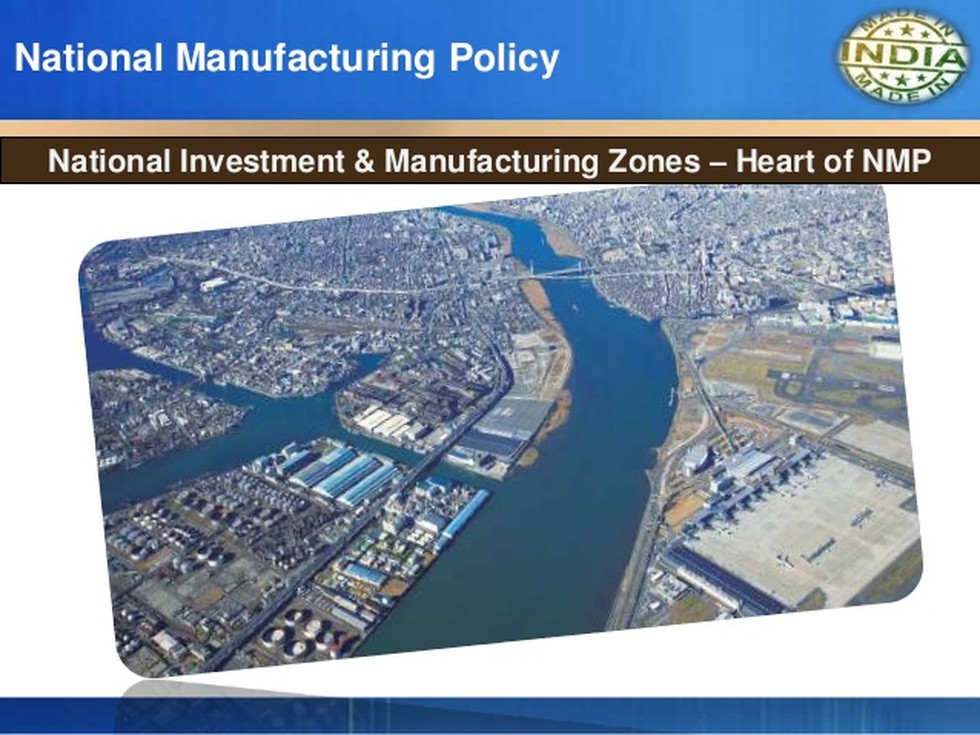
About:
- Parent act: National Investment & Manufacturing Zones (NIMZs) are one of the important instruments of National Manufacturing Policy, 2011.
- Objective: NIMZs are envisaged as large areas of developed land with the requisite eco-system for promoting world class manufacturing activity.
- Present status:
- So far, three NIMZs namely Prakasam (Andhra Pradesh), Sangareddy (Telangana) and Kalinganagar (Odisha) have been accorded final approval and 13 NIMZs have been accorded in-principle approval.
- Besides these, eight Investment Regions along the Delhi Mumbai Industrial Corridor (DMIC) project have also been declared as NIMZs.
- So far, three NIMZs namely Prakasam (Andhra Pradesh), Sangareddy (Telangana) and Kalinganagar (Odisha) have been accorded final approval and 13 NIMZs have been accorded in-principle approval.
NIMZs vs SEZs:
- The main objective of Special Economic Zones (SEZs) is promotion of exports, while NIMZs are based on the principle of industrial growth in partnership with States and focuses on manufacturing growth and employment generation.
- NIMZs are different from SEZs in terms of size, level of infrastructure planning, governance structures related to regulatory procedures, and exit policies.
Prelims Pointers
Dec. 28, 2018
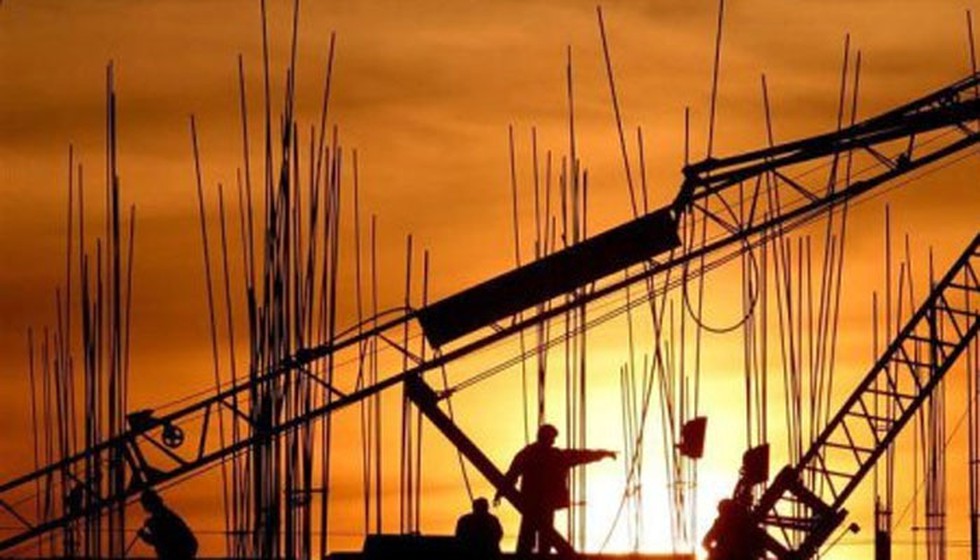
Key Highlights of the survey:
- There were 339 Central Public Sector Enterprises (CPSE) in 2017-18, out of which 257 were in operation. Remaining 82 of the CPSEs were under construction.
- 88 lakh persons (excluding casual and contractual workers) were employed in 2017-18 compared to 11.35 lakh in 2016-17, showing a reduction in strength of employees by 4.14%.
- Total paid up capital in 339 CPSEs as on 31.3.2018 stood at Rs.2,49,988 crore as compared to Rs.2,32,161 crore as on 31.3.2017 (331 CPSEs), showing a growth of 7.68%.
- Total investment (financial) in all CPSEs was at Rs. 13,73,412 crore as on 31.3.2018 compared to Rs 12,45,819 crore as on 31.3.2017, recording a growth of 10.24%.
- Total Gross Revenue from operation of all CPSEs during 2017-18 stood at Rs. 21,55,948 crore compared to Rs. 19,55,675 crore in the last financial year showing a growth of 10.24 %.
- Overall net profit of all 257 CPSEs stood at Rs.1,28,374 crore compared to Rs. 1,25,498 crore showing a growth in overall profit of 2.29%.
- Foreign exchange expenditure on imports and royalty, know-how, consultancy, interest and other expenditure stood at Rs. 4,96,581 crore in 2017-18 as against Rs. 4,38,996 crore in 2016-17, showing an increase of 13.12%.
Prelims Pointers
Dec. 28, 2018
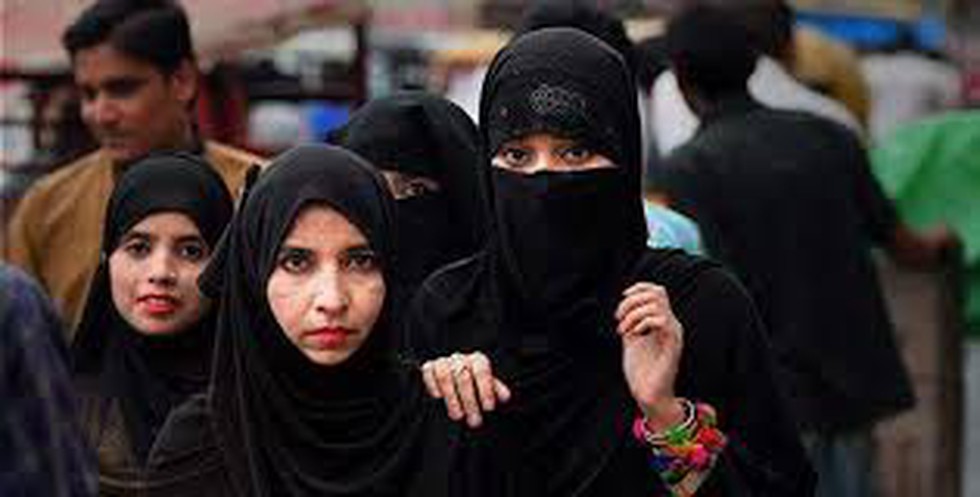
Salient Features of the Bill:
- The bill will replace the ordinance promulgated in September 2018.
- Clause 3 of the Bill declares pronouncement of talaq, both in written or electronic form, as illegal and void.
- Pronouncement of talaq is a punishable offence with imprisonment for up to 3 years and a fine. The bill also makes the women entitled to maintenance determined by a magistrate.
- Congisance of offence can be taken only on a complaint to magistrate by the wife or her close relatives.
- There is provision for bail, which can be granted by a magistrate only after hearing the wife.
- The women can also drop the case against her husband if both reach a compromise.
Prelims Pointers
Dec. 28, 2018
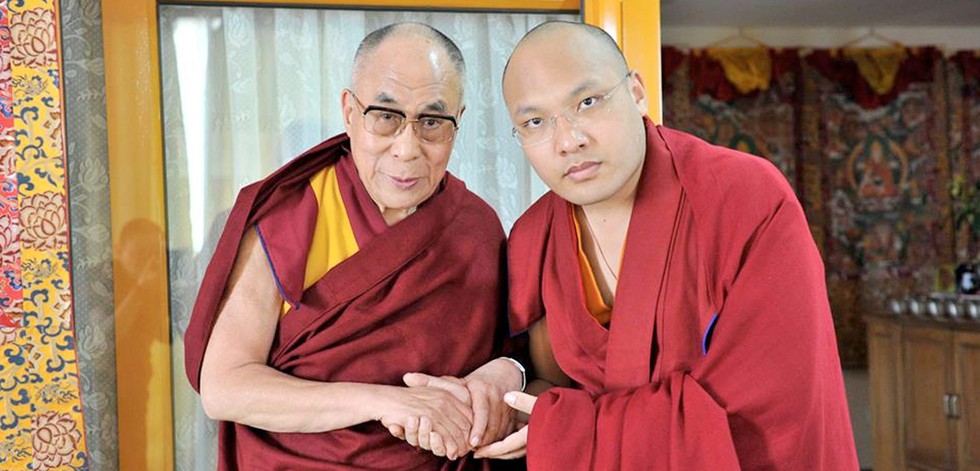
Karmapa:
- The Karmapa is the head of the Karma Kagyu, one of the four major schools of Tibetan Buddhism.
- The historical seat of the Karmapas is Tsurphu Monastery in the Tolung valley of Tibet.
- The Karmapa's principal seat in exile is the Dharma Chakra Centre at Rumtek Monastery in Sikkim, India.
Karmapa controversy:
- The recognition of the 17th Karmapa, has been the subject of controversy.
- Since the death of the 16th Karmapa, Rangjung Rigpe Dorje, in 1981, two candidates have been put forward:
- Ogyen Trinley Dorje (born 1985) and
- Trinley Thaye Dorje (born 1983).
- Ogyen Trinley Dorje (born 1985) and
- Both have already been enthroned as 17th Karmapa, and both independently have been performing ceremonial duties in the role of a Karmapa.
- While the recognition of Ogyen Trinley "appears to have been accepted by a majority of Karma Kagyu monasteries and Lamas, there remains a substantial minority who have not accepted him as Karmapa. These include the Shamar Rinpoche, who historically has been the person most directly involved in the process of recognition.
- The Dalai Lama as well as the Chinese government had, in 1992, recognised Ogyen Trinley Dorje as the rightful heir to the position, but India has not accepted that as there are other contenders.
Prelims Pointers
Dec. 28, 2018
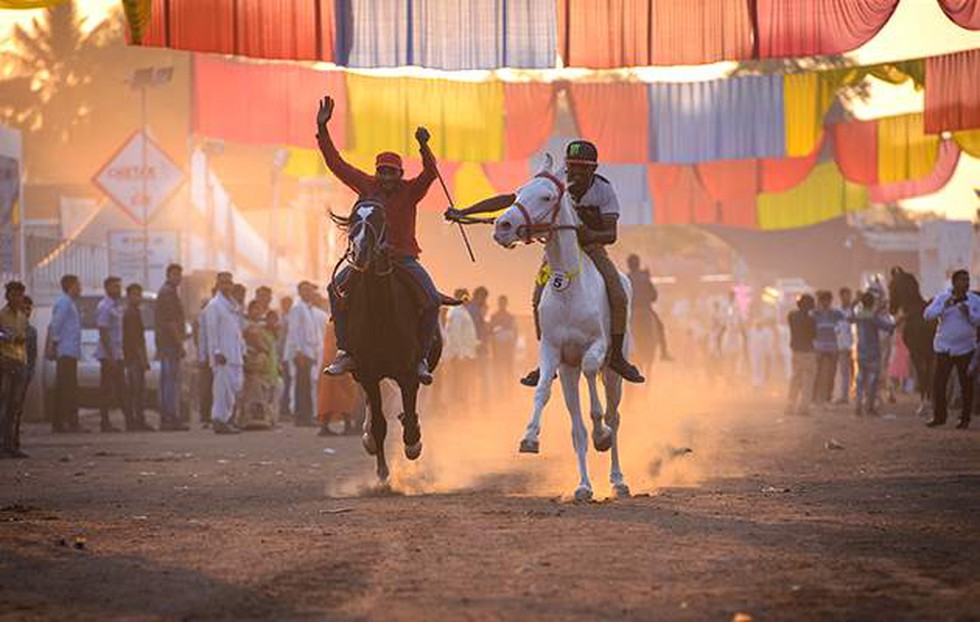
About:
- Sarangkheda Chetak Festival 2018-19 is one the oldest horse fairs in the country with the tradition going back to around 300 years.
- The festival is held on the banks of River Tapi, in Sarangkheda village of Nandurbar district, Maharashtra.
- It is being organised by the Maharashtra Tourism Development Corporation (MTDC) in association with the Sarangkheda Committee.

